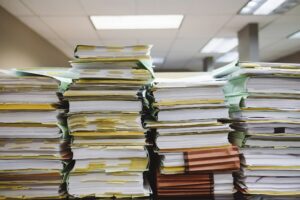A little bit ago, a poster asked me to describe how to make your own baby food. Seeing as my baby is now 6 months old and has been starting to eat some solid foods now and is no longer exclusively breastfed, I figured that now would be a good opportunity to share with you my thoughts on baby foods and how to avoid needing to buy those bought jars.
In the US, it is almost taken for granted that once your baby reaches the 6 month mark, you’ll be adding those Gerber, Beechnut, or similar baby food jars to your grocery cart. These jars have the ease of being transportable with minimal mess, but in my opinion, they are a bit of a waste of money, not to mention unhealthy. Where I live, all jarred baby food contains added sugar, not to mention chemical preservatives. I learned from the locals how to easily make my own baby food, because here, unlike in the US, the average mom here is not using the jarred stuff.
However, I do not use baby food for my babies, generally. I usually stick more to the principals of Baby Led Weaning. BLW is when you let your child “wean himself” to solid foods at his own pace by letting him feed himself finger foods- right from the start. By letting your child feed himself instead of you putting food that he may or may not want into his mouth, you accomplish a few things.
-You let your baby first learn how to chew and only then swallow real food, instead of first swallowing and only them chewing. This helps prevent confusion when the baby’s food is anything but a smooth puree, as the baby already knows how to chew.
-You don’t need to prepare and bring along your own pureed baby food when out and about- you just give your baby real food. Real food is much easier for traveling than puree.
-Its easier and cheaper. No need to spend money on jarred or even on the electricity and hassle to puree and strain your own.
-You avoid making food a battle. By never forcing your child to eat something (what else can you call putting food in the baby’s mouth the second they open it- especially when they’re turning they’re head away from it), your child only eats what he wants. I have only anecdotal evidence with my one son so far (and anecdotal evidence from other BLW moms), but my 2.5 year old is one of the only kids I know who will eat anything. I never forced him to eat anything he didn’t want to, so he isn’t averse to new or different foods. What other 2.5 year olds will eat anything from vegetables (every single one) to seitan to chicken to fish to tortillas to quinoa, the list goes on? I credit this in part to his nature and in part to the BLW.
I don’t go completely by the BLW books.
-I am hesitant about giving my babies allergens and don’t just give them whatever we’re eating. I make sure that whatever I give them is only comprised of one food, until I can be assured that they have no reaction to that food, and then add more complex foods. I only add one new food at a time to a meal.
-I also do give homemade baby foods once in a while. When first making the transition from nursing to my baby’s first taste of solids, I give my baby one meal of puree so he understands the concept of food, that other things aside for breastmilk are also meant for swallowing.
-Additionally, my kids are at a babysitter occasionally while I work as a cleaning lady. (Yes, nothing is beneath my dignity; cleaning actually makes more money than childcare.) Because I know that most people get freaked out by the occasional gagging that accompanies baby led weaning, I send puree to feed to my baby to put the babysitter’s mind at ease. (Why am I not freaked out by gagging? See here.) I figure that occasional “force feeding” (as opposed to self feeding) won’t do too much harm in the long run, so long as the majority of the time my baby feeds himself.
How to Make Your Own Baby Food
1. Prepare a non typically allergenic food for the puree. This preparation can be peeling and cooking (carrots, potatoes, sweet potatoes, butternut squash, pumpkin), cooking (zucchini, green beans, quinoa, rice, peas), or peeling but leaving raw (apples, pears, persimmons, bananas, avocado).
2. Cut up the foods relatively small (why spend more money on the electricity for the blender than necessary), add a bit of water and blend (either in a food processor or a blender, with a blender stick) until it reaches a smooth consistency. Add more or less water depending on your baby’s proficiency with eating solids. When first starting out, make it runnier, and as your baby learns to eat solids, add less water. I don’t believe that straining is necessary; afterall, I do give finger foods to babies that are first starting out.
3. Because it is more time and energy efficient to make a larger quantity of food at one time, and because babies usually can’t eat so much when they’re first venturing into the world of solids, freeze this homemade baby food in ice cube trays so you have individualized small portions to defrost as needed.
Tips and advice–
I try to hold back from giving my children allergenic foods until they are a bit older. Highly allergenic foods I try to withhold from my children at least until they are a year old because of the studies that show that doing so lessens the likelihood of a child developing an allergy to that food (of course, there is always the counter study about the possible “Bamba Effect“). If my child does end up eating that possible allergen and has no ill effects from it, I do not withhold it from him anymore, even if he is still under a year old.
A more complete list of foods to avoid can be found here, but this is what I try to withhold from my children until they are a year old:
Citrus
Strawberries
Mango
Soy
Dairy
Wheat
Eggplant
Corn
Tomatoes
Peanuts
Chocolate
Soy
Nuts
Berries
Eggs
Fish
Do you make your own baby food, or do you buy? From what age do you give your kids finger foods?
This is part of my “Babies With Little Expense” series. Other posts in this series:




